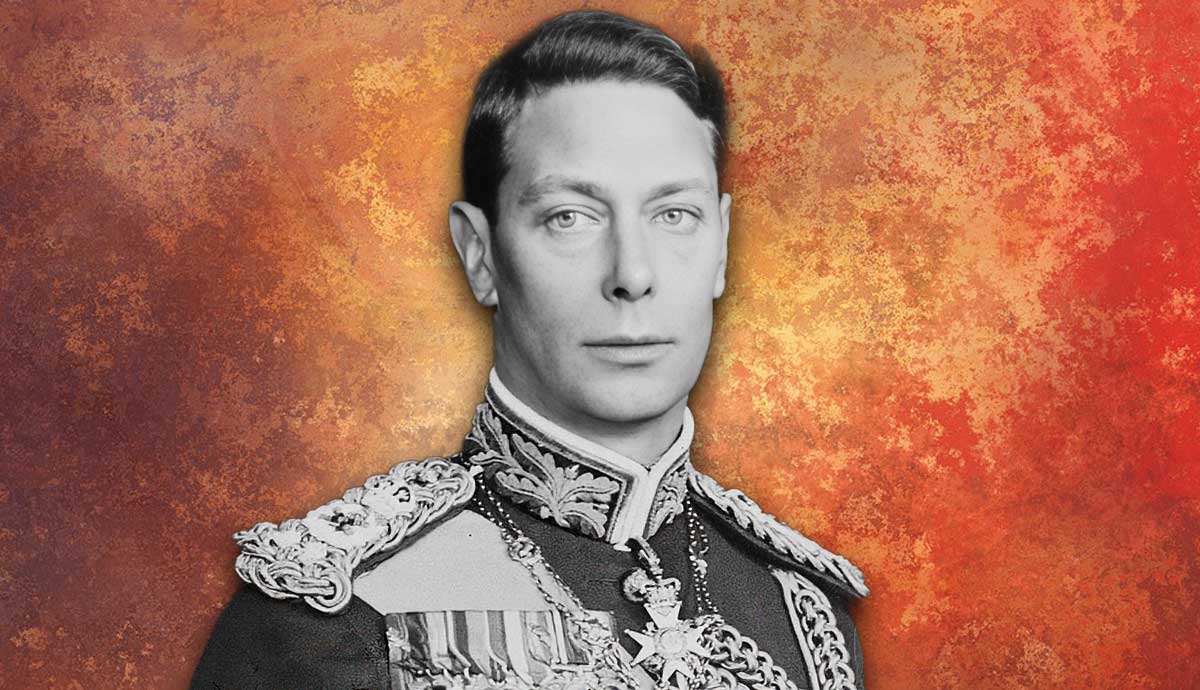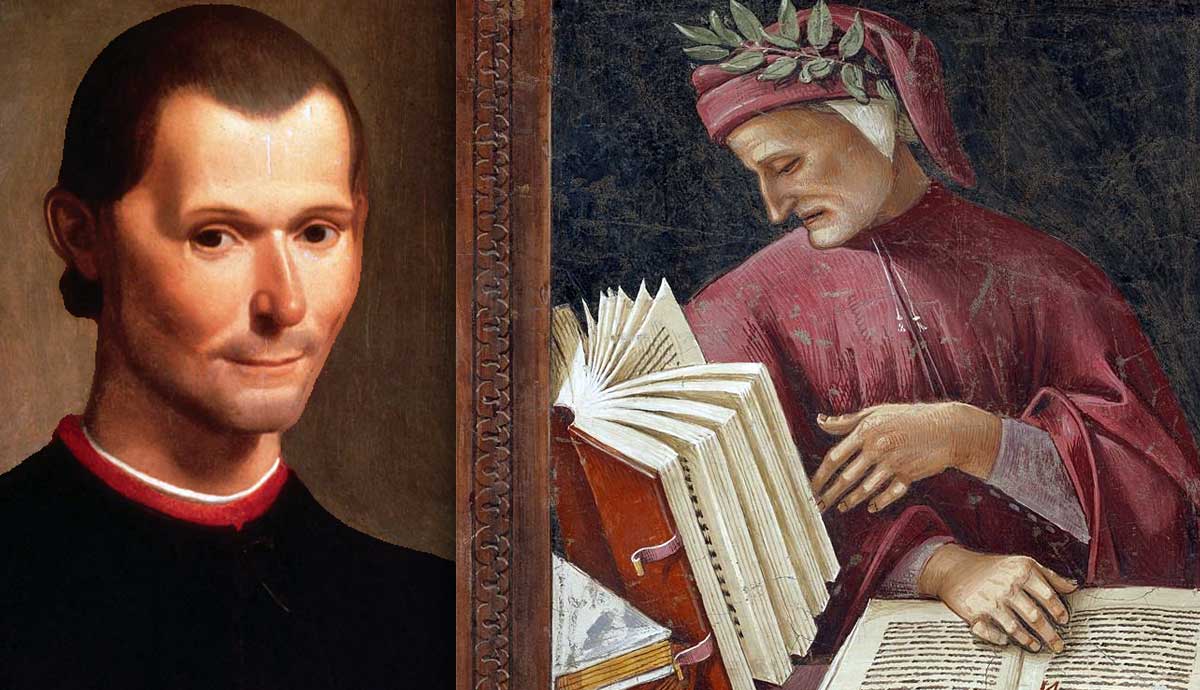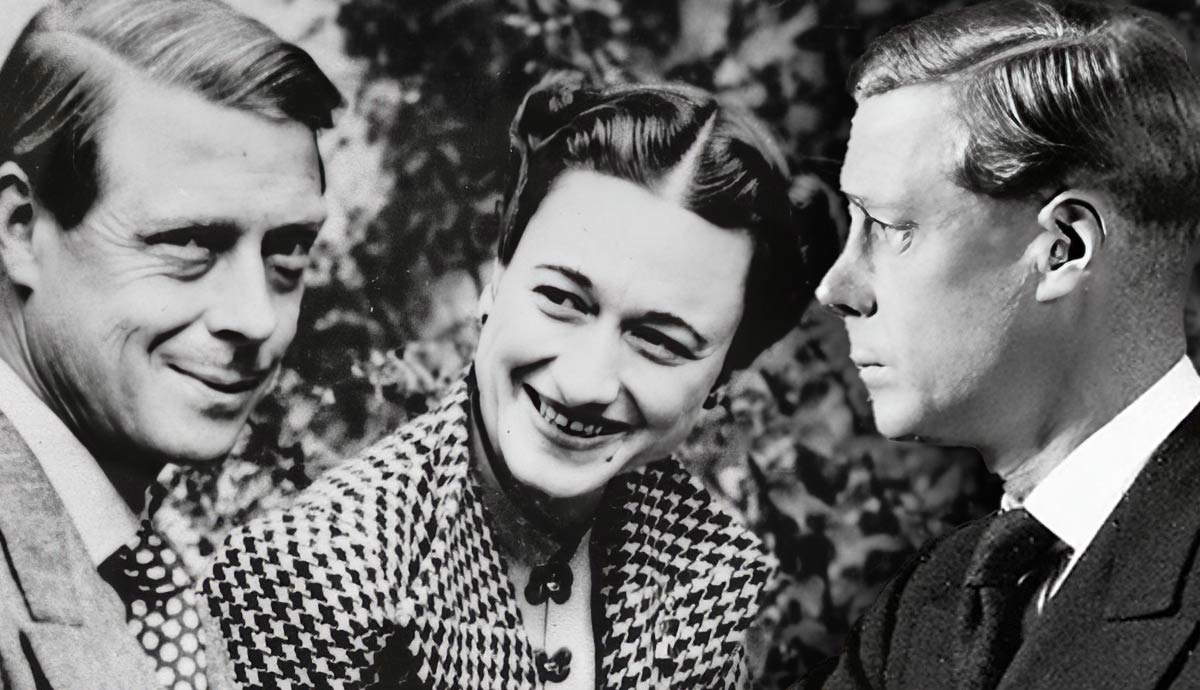
In 1936, Prince Albert of Britain unexpectedly became King George VI after his older brother, Edward VIII, abdicated the throne. Despite his initial reluctance and misgivings about his suitability for this role, King George VI led Britain through the difficult years of World War II. Refusing to leave Buckingham Palace during the Blitz, he became a symbol of defiance against Nazi Germany’s destructive bombings. His displays of compassion and frequent visits to the sites affected by the air raids led to a surge in public support, with many admiring his fortitude and humanity.
How & Why Did George VI Become King?

As the second son of King George V, Prince Albert was not destined to inherit the British throne. After attending Trinity College (Cambridge) and serving in the Royal Navy and Royal Air Force in World War I, the 25-year-old Albert (born Albert Frederick Arthur George) was made Duke of York in 1920. In the following years, he carried out a series of public duties that came with the new title. In particular, he focused on industrial matters, becoming president of the Industrial Welfare Society. From 1921, he also sponsored the Duke of York’s Camp, a project that brought together boys from all backgrounds for a week of outdoor activities. In 1923, Prince Albert married Elizabeth Bowes-Lyon. The couple had two daughters: Elizabeth (the future Queen Elizabeth II) and Margaret.
When George V died in 1936, Prince Albert was already set in his role as Duke of York and a family man. As expected, his elder brother assumed the throne as King Edward VIII in December 1936. At the time, the new monarch was romantically involved with Wallis Simpson, an American socialite. In June 1936, she filed for divorce from her second husband to marry Edward.

However, the couple’s plan faced serious obstacles as the Church of England and most of the political establishment firmly opposed the idea that a twice-divorced woman could become the future queen of Britain. Amid an increasingly hostile press campaign, King Edward VIII finally submitted his abdication to the British Parliament on December 10, 1936. The following day, he announced his decision in a radio broadcast. “I have found it impossible to carry the heavy burden of responsibility and to discharge my duties as King as I would wish to do, without the help and support of the woman I love,” famously declared Edward VIII in his speech.
On the same day, Prince Albert succeeded his brother to the throne as King George VI. His lack of proper training for the role and his reserved demeanor made George VI worry about the prospect of carrying out his new duties. To make matters worse, his brother’s abdication had shaken the foundation of the monarchy in Britain, while on an international level, King George VI inherited the throne at a time of mounting tensions in Europe.
The First Years of King George VI’s Reign

In 1936 (known as the Year of the Three Kings in Britain), the increasingly aggressive foreign policy of Nazi Germany and Fascist Italy threatened the European (and international) order established after the end of WWI with the Treaty of Versailles. King George VI, who had been absorbed by the abdication and the novelty of his unexpected new role, suddenly found himself navigating a rapidly deteriorating political situation in Britain and abroad.
The year before, the Fascist regime had invaded and annexed Ethiopia, thus violating Article 12 of the Covenant of the League of Nations that bound all members to avoid resorting to war to settle disputes. In 1936, Nazi Germany re-occupied the Rhineland, and Benito Mussolini, the Italian Duce, began to openly align himself with Adolf Hitler, declaring the world would soon “rotate on the Rome-Berlin axis.”
In 1938, the already tense situation in Europe worsened. In March, Nazi Germany annexed Austria. Then, Hitler turned his attention toward Czechoslovakia as three million ethnic Germans resided in the Sudetenland, an area incorporated by the Czech state after WWI. As the crisis unfolded, Europe seemed to be on the brink of a new conflict.
In Britain, King George VI supported Prime Minister Neville Chamberlain’s policy of appeasement toward Hitler and Mussolini, sharing Chamberlain’s optimism regarding the possibility of an agreement with the two dictators. In September 1939, however, the feasibility of the prime minister’s stance collapsed as Germany invaded Poland. The conflict Chamberlain had sought to prevent had started. In May 1940, after the unexpected Fall of France, Chamberlain was forced to resign. He was replaced by Winston Churchill.
The Darkest Hour

In the spring of 1940, King George VI grew increasingly worried and frustrated by Britain’s situation. “Everything we do or try to do appears to be wrong, & gets us nowhere,” he lamented in his diary during the “phoney war,” a period between 1939 and 1940 when no military clashes took place between the Allies and Germany. The king was also troubled by Britain’s isolation: “The fact is, the U.S. is not coming in to help us, & nothing yet will make them, but they are pro-British in the main,” he wrote.
At the time, King George VI was also feeling uneasy in dealing with the new prime minister, finding Churchill’s loud and brash personality very dissimilar from his own. John Wheeler-Bennet, the king’s biographer, suggested that George VI “felt somewhat overwhelmed by the very magnitude of Mr. Churchill’s personality.” Churchill’s support for Edward VIII in 1936 probably influenced George VI’s initial attitude toward the prime minister. “I cannot yet think of Winston as PM,” commented the king after his first meeting with Churchill. Indeed, the king had hoped his friend Halifax would be appointed as Chamberlain’s successor.
By September 1940, however, the relationship between King George VI and Churchill had improved. On September 7, the German Luftwaffe carried out the first air raid against London. It was the beginning of the Blitz. For 57 straight days, the English capital was the target of German bombings. In November, other cities were hit. The shared dangers and hardships of the war brought the king and the prime minister together, with both men supporting each other in leading the country through the conflict. “I could not have a better Prime Minister,” affirmed George VI in February 1941.
The King’s Speech

Britain entered World War II on September 3, 1939. On the same day, King George VI addressed the nation. “In this grave hour, perhaps the most fateful in our history, for the second time in the lives of most of us we are at war,” announced the king, adding that “the task will be hard. There may be dark days ahead and war is no longer confined to the battlefield.” It was the first of many speeches George VI held during the war to support the British population, keep morale high, and show fortitude.
His stammer, probably developed during childhood as a result of being ill-treated by his nannies, made broadcasting especially difficult. In 1926, the future king had sought the help of Australian speech therapist Lionel Logue, who believed George VI’s stammer stemmed from a lack of coordination between the larynx and the diaphragm. In the following years, Dr. Logue continued to coach the king, assisting him with his diction and confidence during his many war speeches. In 2010, the story of King George VI and Lionel Logue was told in the Oscar-winning movie The King’s Speech.

The monarch’s efforts to deal with his stammer paid off in his May 24, 1940, Empire Day speech, when he encouraged the listeners in the face of an imminent attack. “The decisive struggle is now upon us. I am going to speak plainly to you, for in this hour of trial, I know that you would not have me do otherwise,” declared King George VI. “Let no one think that my confidence is dimmed when I tell you how perilous is the ordeal which we are facing. … But confidence alone is not enough. It must be armed with courage and resolution, with endurance and self-sacrifice,” he continued.
The king’s words resonated with the listeners. As the war went on, leading to death and destruction throughout Britain, George VI’s bond with the population strengthened, with many seeing the monarch as a symbol of courage and defiance.
King George VI in WWII

On September 9, 1940, two days after the start of the Blitz, King George VI toured the bomb-damaged East End, visiting shelters and comforting a group of mothers who had lost their young children during the German attack. Captain Evan Wallace, who accompanied the king during his three-hour tour of the docks, was impressed by George VI’s display of solidarity, noting that he was keen on talking to “all and sundry.”
The visit to the London docks, one of the city’s most targeted areas during the Blitz, set the tone for King George VI’s behavior during the rest of the war. Indeed, his compassion and his decision to remain in London with his family won him the sympathy of many Britons who admired his sense of duty and courage. On September 11, during his second visit to the East End (this time with Queen Elizabeth), the king spent time with the policemen and staff of Lewisham Police Station, where the royal couple took refuge after the air-raid alarm resonated through the neighborhood. King George VI ended up staying in the station well after the end of the alarm, drinking tea and mingling with the workers.
These episodes of spontaneous bonding with the hard-hit population became common in the following months. “Never in British history,” declared the Times, “has a monarch seen and talked to so many of his subjects or so fully shared their life.” Lord Woolton, the Minister of Food, was also favorably impressed by the king and queen’s behavior during their tours of London and other English cities hit by the raids. “They were so easy to talk to and to take round, and fell so readily into conversation with the people whom they were seeing, without any affectation or side,” recalled the minister.

The bombing of Buckingham Palace on September 13, 1940, strengthened the bond between King George VI and British civilians. “Like so many other people we have now had a personal experience of German barbarity, which only strengthens the resolution of all of us to fight through to final victory,” commented the monarch during a radio message. The shared danger contributed to turning King George VI into a symbol of courage and fortitude. At the end of September, the monarch, inspired by his frequent visits to the war-torn areas, created the George Cross and George Medal to reward acts of civilian courage, insisting on personally designing the medals’ features.
King George VI’s Last Years of Reign and Death

As the frequency of the German air raids decreased, King George VI started visiting his troops on various fronts to boost morale. In 1943, for example, he went to North Africa to congratulate General Montgomery and the soldiers for their success against the German and Italian forces at El-Alamein. The following year, the king toured the D-Day landing sites in Normandy. Then, on May 8, 1945, after Nazi Germany’s unconditional surrender to the Allies, George VI celebrated VE-Day alongside Winston Churchill, who had also played a crucial role in leading Britain through the conflict.
During the immediate postwar years, King George VI’s health took a turn for the worse, while the political landscape of Britain and the world began to change systemically. In 1949, after the collapse of the British Empire, he became the head of the Commonwealth of Nations. The last years of his reign also saw Britain transition to a welfare state.
King George VI died in his sleep on February 6, 1952, a few months after a lung operation. He was 56 years old. His funeral procession, held on February 15, was the first one the British people could watch on television, a testament to the rapidly changing times. In the previous days, about 300,000 British queued to view his coffin in Westminster Hall.
On February 11, Churchill honored his wartime friend during his address to the House of Commons: “The late King lived through every minute of this struggle with a heart that never quavered and a spirit undaunted; but I, who saw him so often, knew how keenly, with all his full knowledge and understanding of what was happening, he felt personally the ups and downs of this terrific struggle and how he longed to fight in it, arms in hand, himself.”








